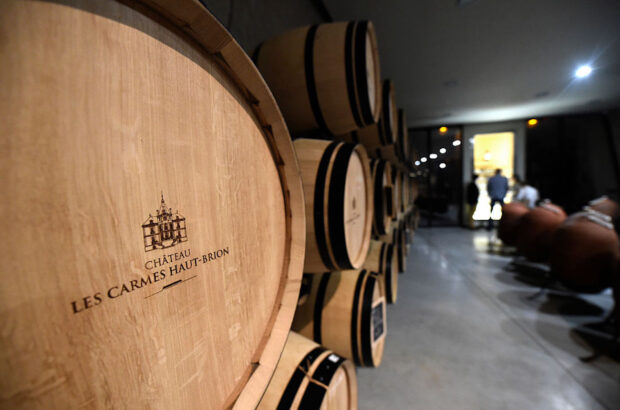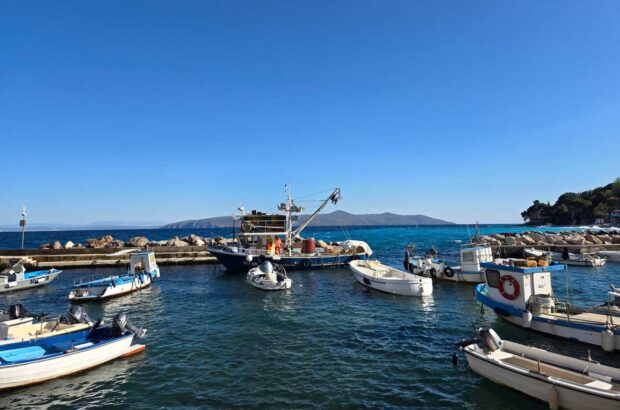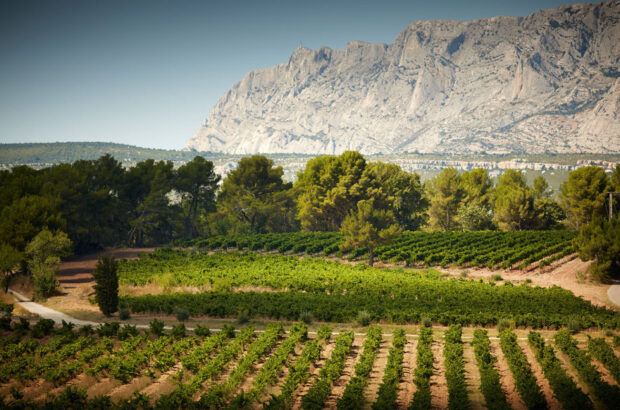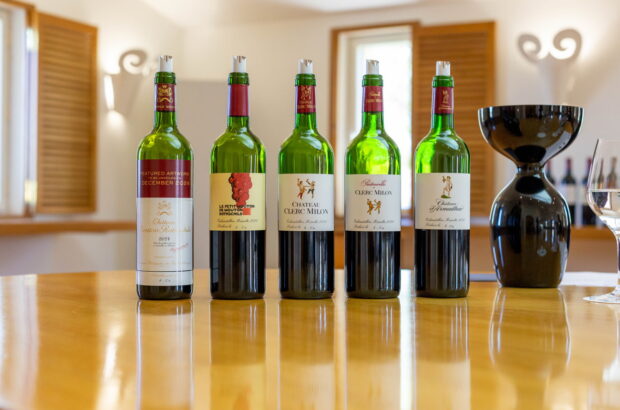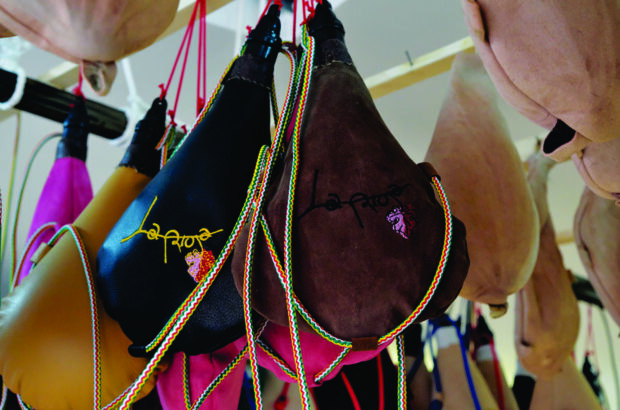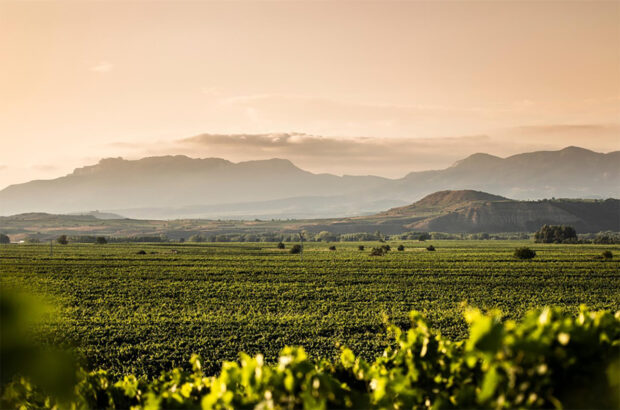After the annual Greek wine fair Oenorama in March, I darted from Athens to Central Greece to the Valley of the Muses before swooping down to eastern Crete. The surging feeling of energy across the Greek wine scene is so potent right now that if you offered me a Greek passport I’d change my name to Giorgos in a heartbeat.
From the front line of Greece’s deep-rooted vineyards, I bring my very own blueprint for the Ten Commandments of Greek Wine…
1. Old vines are big news
From Mouhtaro in the Valley of the Muses to Savatiano in Central Greece to the familiar veneration of Assyrtiko in Santorini, old vines are extensive in Greece and there are plenty more to discover, promote and celebrate.
2. It’s not all about sunshine
Greece is a land of snow-capped mountains, abundant hillsides, lakes and endless coastline. Sun-drenched islands may be the familiar poster campaign, but there is so much more – you’ll find cool-climate vineyards in regions from Epirus in the northwestern mainland, where it often snows, to the breezy Valley of the Muses and the high Ziros plateau in Crete. Warmth in Greece is often mitigated by wind, water and altitude.
3. Assyrtiko is the flagship white
Beyond Santorini, plenty of contrasting styles of Assyrtiko are marching across the mainland and islands. But after Assyrtiko, the next superhero white grape is waiting in the wings. Savatiano has widespread planting and quality. But Kidonitsa, albeit in small quantities, deserves to be leading the charge.

Assyrtiko vines growing in traditional basket style on the island of Santorini
4. Savatiano is the Chenin Blanc of Greece
If you haven’t tasted aged Savatiano, please put it at the top of your must-try list – it’s capable of great and fascinating diversity. When it evolves, the aromas are compellingly
Chenin-meets-Riesling; the flavours as deep as a citrus canyon echoing to Iggy Pop’s boldest growl.
5. The Greek wine industry has a fresh face
Young wine-growers, plenty of female winemakers, siblings, friends and international experience are all reinforcing an industry which now feels bonded by camaraderie. This is a game-changer. From Tselepos to Skouras to Gaia to Monemvasia, as old rivalries fade, the next generation is creating a new legacy by youthful revolution.
6. Dark rosé should become a trend
In Greece, I found it can be deeply fruity, dry, or even have an appetising touch of sweetness. Deeper colour seems to allow a more faithful iteration of local grapes – in my view, Greece can deliver much more range and complexity by not worrying about the current obsession with pale rosé. Samartzis Winery’s Mouhtaro One 2022 (Alcohol 13%) is one of my favourite deeper rosés (think strawberry meets pomegranate) and, alas with no UK importer, currently is available from botilia.gr for €15.60 – even with clobbering import taxes outside the EU plus shipping fees, I ordered myself a case [check with the retailer before finalising purchase].
7. The most recent vintage is not necessarily the best
Greek wines, both red and white, take time. While it can deliver fruity flair in youth, Xinomavro benefits hugely from bottle age and I’m pleased to see big names such as Boutari, as well as the wizard of Xinomavro himself, Apostolos Thymiopoulos, holding back vintages before release. Liatiko can similarly be wonderful when young, with urgent fruit twisting into a sour cherry tang, but with a few years of bottle age it unwinds into strata of compelling savoury finesse. Ageing Greek white wine, however, is the hidden headline here. When I had the chance to taste the Papagiannakos, Honores Savatiano 2015 (Alc 12.5%) at the winery I nearly fell off my chair, I felt so deeply stunned and delighted by its confounding riddle of everlasting complexity. And even more everyday whites can perform miracles in the bottle, such as Toplou’s Assyrtiko 2019 (Alc 13%) from Crete; a wine which sells locally for just over €10 on release, it ages into a vortex of beeswax, nuts and evocative evolution.
8. Xinomavro is superb and deserves to be the flagship red grape
But beyond the wave of international appreciation for Xinomavro, I am convinced that Limniona and Mouhtaro are both capable of leading the vanguard as the next hero status red wine legends of Greece.
9. Blends are only just beginning
My advice to producers is ‘Be bold!’. Muses Estate’s entry-level Clio white (Alc 12.5%) is perfectly balanced, fused from Assyrtiko, Roditis and Savatiano, and oustanding
value in the UK (2022, £15.95, Strictly Wine). And while I adore a varietal Malagousia white, it too performs gentle aromatic miracles as part of a blend. While I mostly eschew international grape varieties in Greek wine (Avantis Estate Syrah Collection 2019 being a notable exception), they can prove useful for blending.
10. Dessert wines are stellar and a huge part of Greek wine heritage
Samos is famous, Santorini’s vinsanto is legendary, but I would urge you to take another look at top-quality aged Mavrodaphne. I’m a particular fan of the work of Parparoussis Winery, and for a mind-blowing balance of sticky zing its white Muscat de Rio Patras 2018 is available from Cava Spiliadis UK for £28.50/50cl. It’s a world-class wine that every dessert wine fan simply must taste.
In my glass this month
After tasting the Muses Estate, Mouhtaro 2021 at the winery I ordered a case from an online seller, because it makes me as happy as any bottle of red I can remember. It is turbo-scented (redolent of those haunting violet whispers from high-altitude Malbec), and the palate is a delicious riddle: sundried tomato meets wild strawberry with a surging freshness on the finish and deeply dynamic vitality. Though the wine is youthful now with firm oak, its gentle spice will settle with age and reveal even more of this rare Greek grape’s outstanding pedigree, and almost Rioja-meets-Rhône character. Here the Valley of the Muses has spelled out an ancient modern legend.




